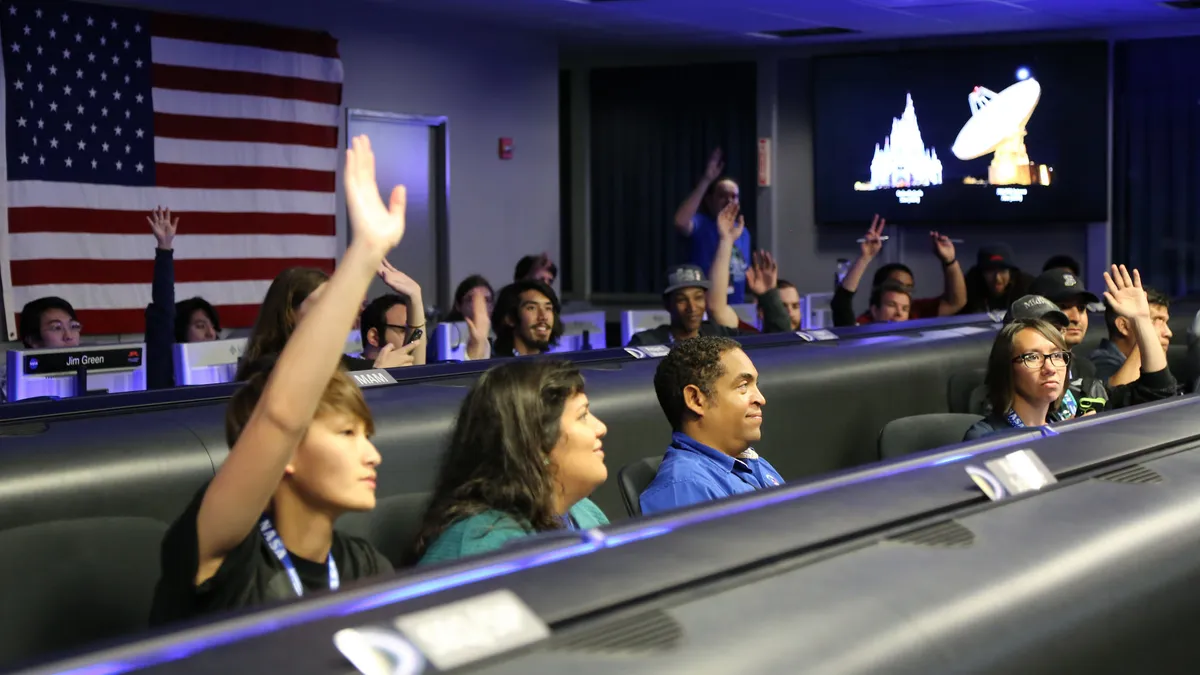When it comes to continuous learning and innovation, companies who are willing to take the biggest risks are often those who reap the biggest rewards. We teach our children that the path to knowledge is fraught with mistakes; yet, as adults, we’re unwilling to fail. A new approach — a “lab mindset” — is emerging that not only allows for mistakes, but considers them opportunities for growth.
When a workplace culture encourages a lab mindset, employees are driven to experiment with new concepts and processes to better understand concepts and promote learning and innovation.
The digital transformation will either hurl a business forward or leave it in the wake of its competitors. Advances in tech will require companies (read: their employees) to continuously learn and innovate to succeed. But a new study by Mercer, Thriving in an Age of Disruption, shows that only 52% of companies are committed to helping their employees thrive at work. So what can be done?
What is a lab mindset?
A lab mindset is about “infusing an appetite for data and experimentation across the organization to not only stay ahead, but also to engage the full force of the people closest to your customers," Kate Bravery, global practices leader for Mercer’s career business, told HR Dive.
While that thinking is typically associated with startups and disrupters, she finds established businesses are using the concept to speed up the product engine and navigate uncertain waters.
“The overarching aim of a lab atmosphere is to create an engaging and interactive environment for participants to easily connect, collaborate, and share learning practices around a topic, be it a conundrum they need to solve or how to engage in emerging innovative practices," MJ Hall, content manager at ATD Forum, told HR Dive. And then you take those insights and "use a disciplined approach to turn ideas into processes and actions that make an impact.”
Model experimentation
Practicing what you preach is important for a company that wants to create a lab mindset. If you expect staff to climb out on the limb with the most fruit, you should be right behind them. Bravery warns that you may get a “cacophony of great ideas, but none that people are willing to back and this can be highly demotivating.”
She recommends companies reward risk-taking, and implement performance management that sees failure as learning. It’s also important to give people “time for innovation and access to data and analytics to help them set up and evaluate experiments.”
Hall suggests a lab-mindset environment should be ingrained in corporate culture. "Modeling a culture of experimentation means constantly focusing on 'getting better at getting better' with cycles of improvement, innovation, and adaption,” she said.
But too few employers create a culture of learning and experimentation; only 31% focus on such according to ATD’s Building a Culture of Learning: The Foundation of a Successful Organization.
Take the risk out of risk-taking
Once you take away the “you’ll never work in this town again!” risk, employees will be willing to experiment. Extended Stay America hotels, for example, made headlines a few years ago for its “get out of jail free" cards – a gesture that showed workers that if they took a risk and failed, they'd still be on the payroll.
You can start small, with “micro-experiments.” Look for a challenge and brainstorm solutions. Then test the ideas to see what works, and, as importantly, what doesn't and why.
Hall suggests that an experimental attitude requires the “patience and know-how to play around with an idea, the courage to take risks, and the willingness to be vulnerable and fail.” Employers will need to cultivate trust and strong relationships for employees to be comfortable discussing ideas individually, as teams or organization-wide.
Deconstruct failure successfully
To encourage employees to experiment more, de-stigmatize failures by turning them into knowledge opportunities.
“Think of a 'lab mindset' as a one that enables exploration, testing and learning for today and tomorrow. Organizations need to be open to change, prepared to take calculated risks and willing to fail fast,” Lory Antonucci, senior talent management consultant at Right Management, told HR Dive.
She warns that resistance to new ways or feeling overwhelmed too frequently prevents business from riding a digital trend that could catapult them ahead. For the lab mindset to succeed, that resistance must be set aside. Employees need to be able to dissect an unsuccessful process or idea into its separate parts fearlessly in order to learn the lessons and opportunities it provides.
Critical process reflection also applies to successes; employers need to identify what they can learn or build upon from those experiments. For companies to capitalize on a lab mindset, they’ll need to identify and nurture transformative leadership.
HR’s role
For HR, adopting a lab mindset helps the department speak the same language as business leaders, Bravery said. "What are our biggest business issues, what might be done and what value do they return? By asking the right questions, providing the right support and creating the right conditions, the collective energy of the workforce can be channeled to ensure the enterprise thrives.”
Employees want to be part of the innovation process just as much as HR and business leaders want new solutions. This means there's a lot of room for collaboration as these two needs fuse together, Bravery said; "It’s a match made in heaven to allow organizations to tap into their people’s ideas and energy, while keeping employees motivated and engaged."
When employees are free to fail, they’re willing to explore and innovate. When they’re paralyzed a mistake could mean a pink slip, growth and change can never occur. And for businesses looking remain competitive, an inability to change can mean disaster.





















